Review: Nextbit Robin
Home Screen
I usually start with the lock screen because that's what people first see when they wake their phone, but the Robin deserves some background first. This device ships with Android 6.0 Marshmallow and user interface skin from Nextbit. The UI isn't overly onerous, but does make some changes worth calling out.
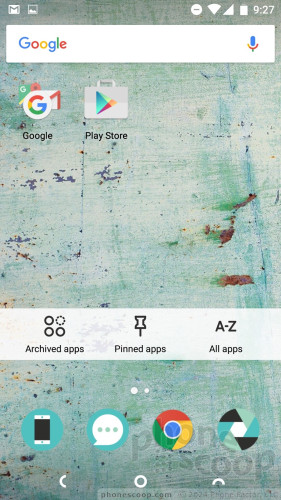
The Robin uses home screen panels, to which all Android users should be accustomed. There are three significant differences in the home screen experience.
First, Nexbit has done away with the app drawer completely. It doesn't believe in the app drawer, which means all the apps installed on the phone are laid out on the home screen panels. (A number of manufacturers do this now.)
Second, Nextbit has permanently placed an app-sorting tool on all the home screens, tucked into the bottom-right corner. Pressing this button lets you quickly see your archived apps (apps that have been offloaded to the cloud), your pinned apps (apps you want to remain local on the device at all times), and all apps (whether they are in the cloud or on the phone). This app-sorting button cannot be moved to another spot on the home screen, which I find kind of annoying.
Third, the Robin doesn't use widgets the way you may be used to. In fact, it doesn't really support widgets at all because the home screen panels are packed with all your apps. There is one exception at launch: pinch inward from any home screen and the Robin will show you a calendar widget that lists your agenda. That's it. Nextbit says it will add support for more widgets over time, but for now all those fancy widgets you love are a no-go.
Beyond these elements, Robin's version of Marshmallow is themed to match the colors of the hardware. That means lots of soft greens and pale whites throughout the UI. Thankfully, the Robin uses a nearly stock version of Quick Settings / notification shade, and general settings menu. (If you look closely, you might notice that the Robin's hardware colors are pretty much those of the settings screens.)
The Robin does support third-party launchers. That means if you want to download and install the Google Now launcher, for example, you can supplant Nextbit's user interface with the Google Now UI (which is closer to stock Android). If you choose third-party launchers, you'll regain access to widgets. Nextbit says you won't lose the core app-offloading behavior of the platform if you use third-party launchers, but you will lose some of the animations and other effects around the process of off-loading apps to — and re-installing apps from — the cloud. The core storage management features remain.
Users can still adjust all the standard customizations, such as wallpapers, ringtones, alerts, and so on.
Performance
The Robin uses a Snapdragon 808 processor clocked at 2 GHz with 3 GB of RAM. It should be a powerful setup, and it is most of the time. I didn't have any problems during normal usage of the Robin and the phone's UI was fluid and quick. The one issue I did experience was prolonged app installation times. This is probably more a result of Nextbit's software/storage manipulation than the processor itself, but FYI app installs from the Play Store are slower on the Robin than other phones with a similar processor.
Lock Screen
Given all the changes to the home screen experience, you might be worried for the lock screen. You can chillax. The lock screen makes use of Nextbit's fonts and themes, but is otherwise on par with other Android handsets in terms of raw usability and functionality.
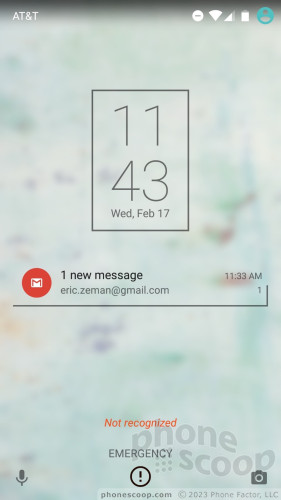
Pressing the screen lock button wakes the screen and reveals an attractive clock that is almost impossible to read outdoors. I really like the clock's appearance, but thin, black text on a bright background isn't the most practical combination. Your notifications stack below the clock as you expect them to, with shortcuts to Google Search and the camera in the bottom corners.
You have control over how much info is revealed by notifications (everything, not a whole lot, nothing at all). I'm glad the Quick Settings shade is available from the lock screen, too.
As far as security goes, you can choose none, a PIN, a password, a pattern, or a fingerprint. During the initial setup process Nexbit suggests people add a thumbprint. That's what I did, and it works wonderfully. Like most modern fingerprint readers, the Robin's takes a few moments to train. Once you've stored a print, it unlocks the phone almost instantly. This means you can generally wake and unlock the Robin with a single press of the lock screen button.
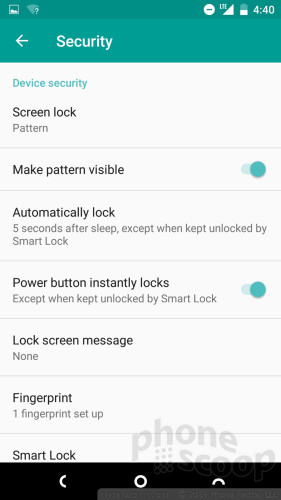
Nextbit Stuff
The crux of the Robin's appeal is how the phone manages storage. The phone ships with 32 GB of internal storage, of which about 24 GB is available to end users, but Nextbit (originally a cloud company) also gives Robin owners access to an additional 68 GB of online storage. That makes Robin's "total storage" 100 GB, with 32 GB local and 68 GB in the cloud. The value proposition of Nextbit's software is that it can automatically offload rarely-used apps and files in order to make room for new apps and files, and then dynamically recall those apps/files when needed. How does it do this?
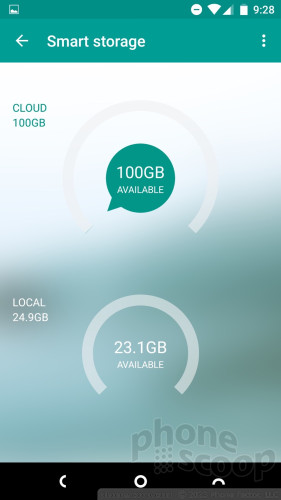
Nextbit prioritizes apps and files based on how often they are used. That game you downloaded over the holiday break but haven't touched since? Yeah, Nextbit will earmark that one for the cloud. Same goes for photos or music files you haven't looked at or listened to in a while. The software is smart enough to know that you might check that one photo-sharing app every week and leave it alone.
Every time the Robin decides to offload an app, you'll see the little lights on the back start to pulse. On the screen, the app icon itself will transition from its full-color shortcut on the home screen to a grayed-out, transparent version of the shortcut. When you decide you want to play that game again, the Robin can reinstall it to the phone. Just tap it an it will reinstall. The Robin's best trick is that offloaded apps save their settings, account logins, and so on. That means if you offload Instagram, you'll still be signed in ready to share when the app is re-installed on the phone.
It all performs seamlessly in the background. As noted earlier, you can “pin” some apps as too special to offload, and they'll never be sent to the cloud. The phone also backs up everything that's on the phone, and you can select to backup only over WiFi, only when charging, and so on.
The idea is really neat, I'm not going to argue about that. I do question the real-world usefulness, however, and here's why.
First, most $400 phones (which is what the Robin costs) come with 32 GB of storage and perhaps support for memory cards. Many in that price range offer 64 GB variants and memory card support. Moreover, today's mid-range and flagship phones often support memory cards with capacities up to 128 GB or even 200 GB range. That's an incredible amount of storage for a phone and more or less negates the need for cloud storage of any kind.
Second, there are plenty of online tools that let you offload content to save local storage. The Robin is unique in that it offloads entire apps, there's no doubt about that, but only games truly take up ridiculous amounts of storage on phones. To cite an example, consider the iPhone. We all know it is limited to 16 GB, 64 GB or 128 GB of storage. People who buy the 16 GB model can use Google Photos to offload and store all their images (for free), and stream music (rather than store it locally) from Apple Music or Spotify. There's also Amazon, Dropbox, OneDrive, Box, Google Drive, iCloud, and on and on. Each of these has their pros and cons, of course. Moreover, these services allow people to access their content from nearly any device, including desktop machines. Nextbit does not.
Third, there's the pesky idea of offline access. What if I forget to reinstall a game or movie or vital file before I get on an airplane? Then I'm screwed.
Speaking personally, I've moved nearly all my content to the cloud (files, photos, music, movies) and can comfortably use a 32 GB phone without worrying about how much room is left on the phone. Maybe the downside of that is I am more beholden to wireless access, but at the end of the day using the cloud is more freeing.
As I said, I like the idea of the Robin more than I like the Robin itself.
Camera
You can launch the Robin's camera from the lock screen or the app on the home screens. Alternately, a quick double-press of the screen lock button will open the camera, even if you've secured the phone with a password or print.
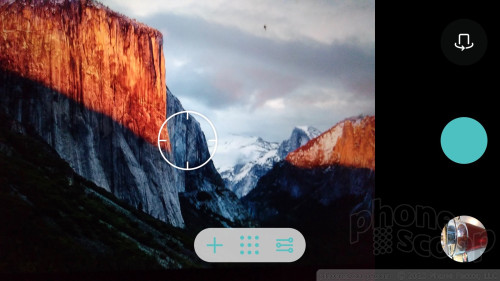
I rather like the camera UI; it's simple and to-the-point. The shutter button is nice and large, but there's no separate video capture button.
A small control strip floats along the bottom of the screen. The strip lets you adjust the flash, timer, grid, and HDR settings. It also lets you switch shooting modes, or adjust additional settings. Those settings are limited to setting camera resolution and turning location tagging on/off.
There are three shooting modes: auto, manual, and video. The auto camera mode is simple point-and-shoot. That's it. The manual mode lets you adjust white balance, exposure, ISO, and focus. Notably, you can opt for manual focus if you really want to be creative. There's no panorama.
If there's any app on the phone that's slow, it is the camera. The camera is sluggish during focus and image capture enough to the point where you can easily mess up shots by moving the camera before it does its job. Nextbit said there are a few bugs impacting camera performance in general (the app, not the images) that it hopes to resolve soon.
Photos
The Robin's 13-megapixel shooter is an average camera at best, and is often below average in overall results.
The slow performance really messes with focus. If you're holding the camera absolutely still the exact instant the shutter fires, then yes, it can produce sharp images. Pulling this off in the real world is more of a challenge than it should be. White balance was almost always accurate, and exposure was mostly decent, but the Robin nailing focus, exposure, and color all at the same time was a rare event. You're most likely to get good results when outdoors on a sunny day, (like most every other camera.) Indoor photography produces images that are saturated with grain. The flash helps when you're up close.
The selfie cam isn't too bad. It is fairly good when it comes to focus and exposure. My biggest complaint would be grain.
The video camera can capture up to 4K footage. The results were, on average, better than what the camera produces. Focus, color, and exposure were all pretty good.
If you own the Robin, you can rely on the phone for day-to-day photo/video needs, but I'd use better gear if you're interested in more enjoyable memories.


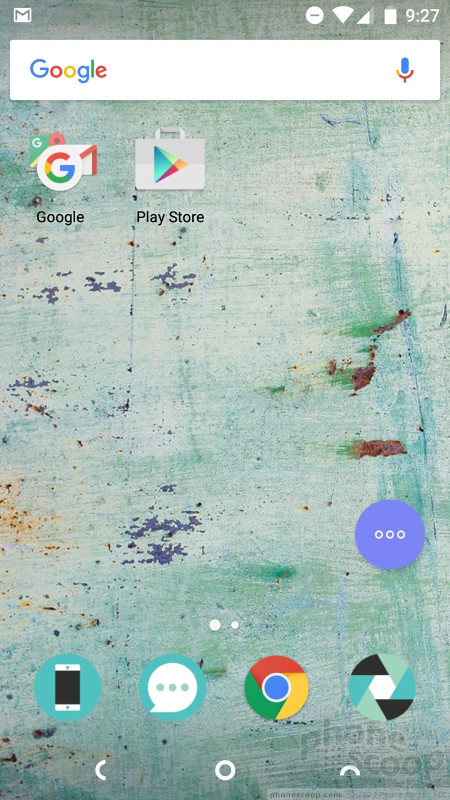







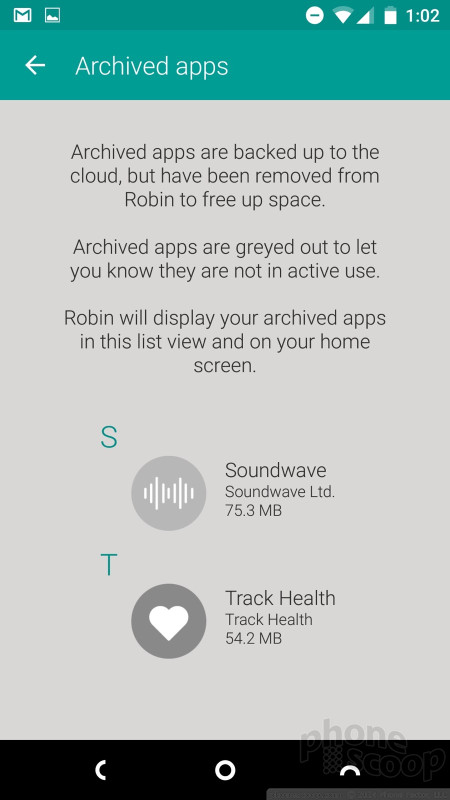





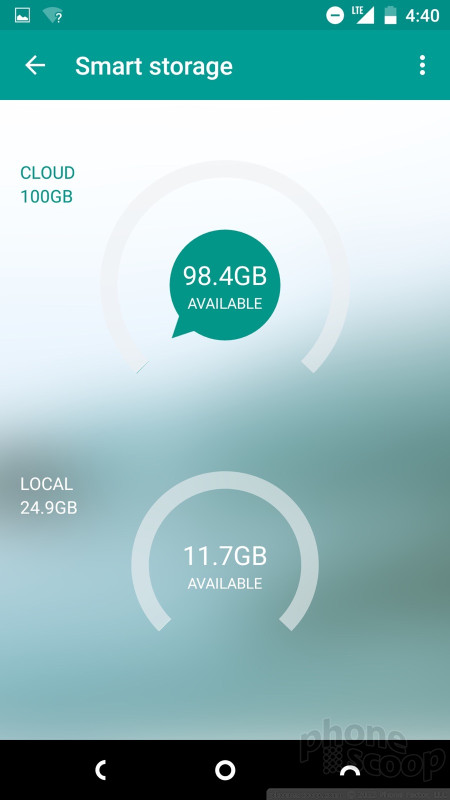




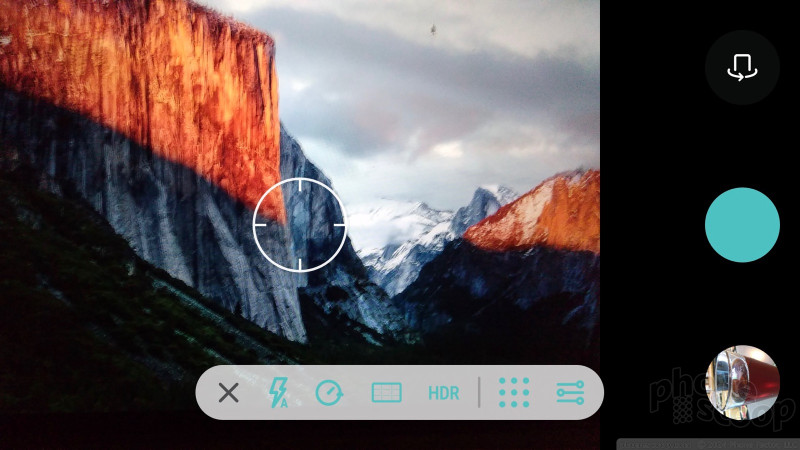























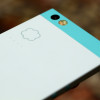 Hands-On with the Nextbit Robin
Hands-On with the Nextbit Robin
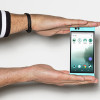 Nextbit to Shut Down Cloud Storage On March 1
Nextbit to Shut Down Cloud Storage On March 1
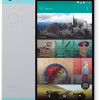 Nextbit Ends Support for Its Robin Smartphone Today
Nextbit Ends Support for Its Robin Smartphone Today
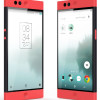 Nextbit Adds Ember to Robin Roster, Video Backups to OS
Nextbit Adds Ember to Robin Roster, Video Backups to OS
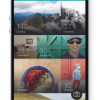 Amazon to Sell Nextbit Robin for $299
Amazon to Sell Nextbit Robin for $299
 Nextbit Robin
Nextbit Robin









